I watched The Martian over the weekend (great movie, though I suspect it got overrated somewhat) and it occurred to me that the connecting tissue between any, let's go with "present-to-near future", space-faring adventure involves a lot of troubleshooting. That is to say, that astronauts are often genius scientists in peak physical condition because they need to handle any of a thousand things that might go wrong with the rocket they're strapped into or the many unusual and unexpected quantities of space travel or space itself.
Similarly, any good genre piece about space travel or space habitation in a realistic, contemporary setting will often follow a similar "troubleshooting" narrative. In The Martian, Mark Watney (Matt Damon's character) wakes up on the surface of Mars and is immediately faced with a dozen or so problems he needs to fix in order to survive, and in varying degrees of urgency. Fixing the hole in his chest caused by a flying piece of debris is priority number one, of course, but then he has to consider his supplies of oxygen, water and food and the stability of the "Hab" habitation tent he and his fellow astronauts resided in during the mission as violent storms continue to batter it. In a lot of space-faring games, this task-by-task troubleshooting will either frame the central narrative or be an ever-present aspect in the background to whatever else might be going on. It's odd that it didn't occur to me until now that the space games that bother to integrate that hook read more true than those that don't - which isn't necessarily a knock against, say, Doom that it doesn't spend a sufficient amount of time worrying about Mars's atmospheric conditions and the structural integrity of Doomguy's marine uniform and oxygen supply (though I think all that became an issue in Doom 3, so maybe someone at id Software did take that stuff seriously at one point).
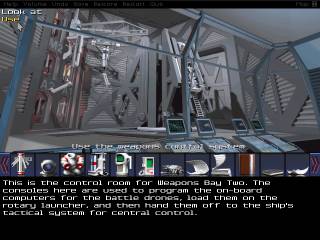
A smattering of games that are built around, if only initially or tangentially, troubleshooting various issues with a space vessel or installation include: Mission Critical, an adventure game I LPed awhile back that spends the first half of its running time dashing around a spaceship fixing immediate problems like hull breaches and unstable engine cores; Dead Space, where the player is specifically sent in as a space engineer to troubleshoot the functionality of a floating space wreck to restore power and possibly salvage the craft if no survivors were found, and many of the stages are built around the various decks and systems he has to repair tout de suite in spite of the monster infestation; Kerbal Space Program, which is entirely this sort of incremental scientific problem-solving; an old-ass first-person dungeon crawler I covered for ST-urday called B.S.S. Jane Seymour, which has multiple ships that you have to fix with the same routine of restoring power and fixing systems with coolant; and to a lesser extent games like Mass Effect and Metroid Prime where the protagonists respond to distress calls and spend a few tense minutes in a derelict ship before the action kicks in.
Kerbal more or less proved that a game that was purely about "sciencing a situation" could do well with a certain crowd of NASA buffs and explosion appreciators - with Giant Bomb East falling somewhere in the middle (of the ocean (because their dumb ship fell to pieces before leaving the atmosphere)) - but even as a regular guy with two "B" GCSEs in high school Science I like when sci-fi video games use this sort of high-stakes troubleshooting as a framing device. It's what the best space-faring movies and fiction (and non-fiction, I guess where Apollo 13 is involved) tend to fall back on a lot, so in some ways it's entirely expected, but it creates an interesting and intelligent set of problems that don't require giant guns to solve. Well, again, unless it's Doom. Man, I really need to play that new Doom...
New Games!
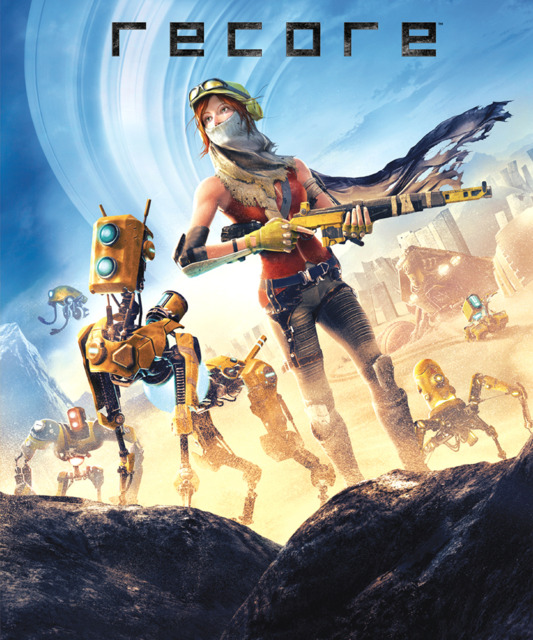
Doom! No wait, that's already out. ReCore! That's a game that hasn't come out yet, but will on Tuesday. I recall ReCore briefly being the hottest "oh shit!" game trailer at E3 that featured a female protagonist surrounded by robotic animals on a post-apocalyptic world until Horizon: Zero Dawn came along, but I'm still cautiously optimistic about it. From gameplay I've seen since then, it has a strong Ratchet & Clank platforming vibe crossed with early images of Rey from the new Star Wars movies - self-sufficient scavenger girl on a desert planet with a cute robot companion - and I'm allowed to be excited about any game that borrows a few pages from the playbook of either of those properties. That said, it feels like there's a whole lot I don't know about the game, so I'll have to wait and see.
I'd be optimistic about Dragon Quest VII for 3DS as well, except for two things: I already have some idea of what it'll be like, as a game that was first released 15 years ago that belongs a populous series that rarely changes too much from iteration to iteration. I've not played DQVII, but I have played its immediate sequels, so I can be reasonably certain of what to expect. The second thing is that, because I still have the DS remakes of DQV and DQVI to play through, it's not a game I have a strong compulsion to play for the foreseeable future. I've been neck-deep in RPGs this year (I'm counting Stardew and MGSV, shut up) regardless, with new ones joining the pile at alarming frequency, so I'm all set for now. DQ is still a series I check in on every so often though; can't really call myself an avowed JRPG fan without a solid knowledge base of the genre's grand-daddy franchise.
A game I was touched to see on the release schedule this week is the big Chunsoft-developed Mystery Dungeon-style revamp of a little Indie game called One Way Heroics, dubbed Mystery Chronicle: One Way Heroics for its English localization. One Way Heroics was a pleasant surprise I came across during my May Madness feature for 2014 - an unusual roguelike that, instead of sticking the player in some dungeon to see how long they could last, the player was instead sprinting across a world that was disappearing into the void behind them. The challenge was to stay ahead of the yawning vacuum that beckoned them, defeating monsters and collecting treasures along the way. The risk vs. reward dynamic was that fighting monsters and collecting treasure and going into buildings would slow you down, and potentially even cause you to get trapped. However, if you had any hope of defeating the tough opponents that appeared at certain distance milestones, going out of your way for all that extra equipment and monster-killing XP became necessary. Mystery Chronicle has rebuilt the game from scratch with additional features, though they worked closely with the One Way Heroics dev to make it happen. It's genuinely pretty cool to see a moderately well-established company choose to adapt an Indie project from a developer who was clearly inspired by and (I gotta assume) a fan of the output of the company in question. Its English localization launches on PS4, XB1, PS Vita and Steam this week - it's getting itself out there, and I'm happy more folk will get to experience a more polished version of One Way Heroics for themselves.
There's a few more exciting releases this week. Now that we're back to something approaching a regular influx of new games, I'm going to have to reduce a lot of release news to a brief bulletpoint list:
- Telltale's Minecraft: Story Mode concludes with Episode 8 just as their Batman series launches a physical disc version for PS4 and XB1. Owners of this physical disc will still need to download the episodes digitally as they come out, so I'm left wondering what the point of it is. Surely the physical edition can wait until the whole game is out and available to stick on those Blu-Rays? Anyway, the actual next Batman chapter release is next week, so I'll have more to say about it then (though it's probably just going to be "Telltale's still churning these episodic games out, huh?").
- NHL '17 is out on practically everything next week, including the last-gen consoles. Figures that it's out on a week when Jeff Bakalar is taking a vacation, though I'm sure he'll have plenty to say about it on the Beastcast once he comes back. Now I'm wondering if those two scheduled events are related...
- In the interest of fairness, I'll also say that another big sports franchise - Pro Evo Soccer - also sees its annual iteration this week. This is better known as the one franchise Konami has yet to throw under a pachinko bus or worse, but I suppose I should bite my tongue in case it comes to light that this 2017 edition also has headless zombies in it.
- I'm moderately excited for Pac-Man Championship Edition 2, though I'm not sure how many more original twists they can wring out of the original yellow pizza-man formula. Namco themselves gave up pretty quickly back in the day, literally putting a bow on his single-screen adventures before moving onto the platformers and party games.
There's some relaunches and ports too:
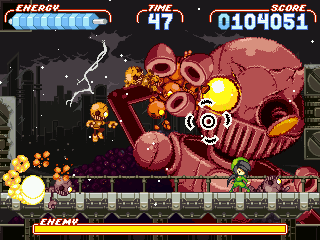
- Noitu Love: Devolution, Indie dev Konjak's love letter to wonderfully animated SNK and Treasure run-and-guns like Metal Slug and Gunstar Heroes, is coming to Wii U and 3DS as part of their Nindies range. The game's been around a while, but I feel like the Nintendo platforms were always meant to be their spiritual home.
- Dead Rising, Dead Rising 2 and Dead Rising 2: Off the Record are all getting current gen rehashes. I guess the original turns ten years old this year? My, where does the time fly? And you can ask yourself the same question as you play those games with the very stringent time schedules they demand, but in fancy new HD graphics. Hopefully that boost will fix the tiny font problems of the first game.
- Similarly, fans of very old 360 games can rejoice in revisiting the full BioShock experience in HD with BioShock: The Collection. That includes the first three games with all DLC, like Minerva's Den for the second and Burial at Sea for the third. PC owners get something of a raw deal, since they won't be seeing a HD-ified BioShock Infinite, but can be content with the fact that they will receive the HD versions of the first two games for free if they already own the originals. I believe the official explanation for a non-"HD" BioShock Infinite for PC is that it already looked amazing on a rig with the specs to run it at full blast, rendering a new version moot. What a weird way to go about doing that.
Let's just cut the releases there, this section is getting long enough. I didn't even get to talk about Psycho-Pass: Mandatory Happiness!
Wiki!
Completed Super '95 last week, so it was time for a new Wiki Project to focus on. I've chosen to saunter back to the PC Engine for a spell, continuing from where I left off after running through the HuCard libraries of the TurboGrafx-16's better-regarded Japanese cousin for the years of 1989 and 1990 at the start of this year. Right now I intend to finish off the rest of the PCE HuCard games - that's every single one released exclusively in Japan between the years of 1991 and 1995, after which they ceased production.
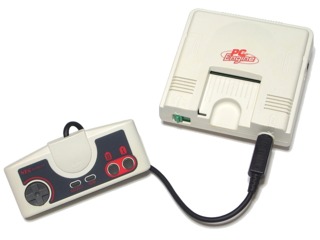
That's actually not as big a project as I'm making it sound, however. The PC Engine adopted its CD-based sibling (how many more family member metaphors can I squeeze in here?) around the very end of 1988, with developers and publishers quickly taking to the low production costs and superior memory storage of the optical media format over the old and busted HuCard cart format. Between 1991 and 1995, the back half of the PC Engine's effective lifespan, HuCard releases slowed down to a trickle. We saw something similar with the NES and the Famicom Disk System way back when: the cart technology managed to catch up so quickly to what FDS floppies were capable of - without the load times, even - that Nintendo didn't even bother releasing the peripheral overseas.

The rub, since I'm beating around the bush here, is that there were only 73 recorded PC Engine HuCard releases in the above time frame of five years. The Super Nintendo, in comparison, saw more releases than that in just one month in 1994. The PC Engine was popular in Japan, sure, but it was never that popular. And its fiddly HuCards certainly weren't popular after CDs showed the world what they could do in... uh, a terrible port of the terrible first Street Fighter game and an adventure game where the player dates an underaged teen idol. (Better PCE CD games showed up eventually, like Rondo of Blood and Lords of Thunder.)
Anyway, I took a big chunk out of 1991's PCE HuCard catalog this week: 19 out of the 44 games released that year in that format. Five of those were new pages, but since I'm not tracking those with a separate list on the site, I've thrown them in with the others below:
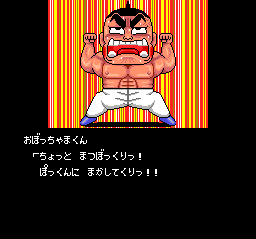
- OverRide: A semi-decent vertical shoot 'em up that was Sting Entertainment's first known project. You might know those guys better for their Byzantine strategy RPGs like Yggdra Union or Knights in the Nightmare. OverRide is very similar to the excellent Blazing Lazers, right down to its upgradable power-up system.
- S.C.I.: Special Criminal Investigation: This is actually just Chase HQ 2, but they dropped the franchise name for the PCE release for some reason. It's a very middling port of the Arcade game, and an indication that the PC Engine would not be a viable platform for such conversions in the future. Well, not until it could get the Super CD/TurboDuo's extra oomph.
- Aldynes : A horizontal shoot 'em up that was created specifically for the SuperGrafx, otherwise known as one of the least successful consoles in living memory. The game itself isn't too bad though; it showed off what the enhanced SuperGrafx could do with some fancy 16-bit parallax scrolling, but since it was one of only five games released for the system it couldn't do much to save it.
- Puzzle Boy: As in, Kwirk, that Game Boy puzzle game where you push walls around on pivots to make a path to the exit. The PCE version is functionally identical but for the whole, you know, "having colors other than puke green" deal.
- Final Match Tennis: Human, the creators of Fire Pro, made a few of these Final Match tennis games for various systems. This one's well-regarded for its simple, approachable arcade gameplay and four-player functionality. If I'm able to play a sports game without making a fool out of myself, it's doing something right. Or I am, but that's far less likely.
- Zero-4 Champ: I've worked on two of these Zero-4 game pages for the Super Famicom, so it's a little odd to suddenly bump into the series originator. The goal of Zero-4, which is a shortening of "0-400m", is to compete in illegal drag races for cash and underworld fame. If you've seen the Fast and Furious movies before they completely lost their minds, you'll know it involves a lot of supercharging things and in-depth talk about car parts. I'm in your face.
- Obocchama-kun: I'd never heard of this anime/manga license before this week, but one of the few English-language sources on it was from a Ranma 1/2 fan site that apparently has an ancient beef with Obocchama-kun because the success of its animated adaptation, with whom Ranma 1/2 had a competing time slot, would be a factor in the Ranma 1/2 anime's eventual cancellation. It's about some ludicrously rich and obnoxious brat who represented Japan's naive complacency in their economic bubble of the late 80s. The game version, a dull platformer, is an excuse for a lot of goofy sight gags and in-jokes from the show. Apparently its NES brother is an early example of Mario Party's gameplay model of "chase a thing halfway across the board, and then follow the next waypoint".
- Titan: Not to be the giant naked dude who has to attack on Titan, but this Breakout variant just isn't all that compelling to me. Instead of being stuck to the bottom of the screen, blocking the bouncing ball from flying down into the oblivion below, you are instead moving around with full 2D mobility, reflecting the ball around a maze instead. Titan's one of those games that made the rounds on European home computers before someone in Japan was curious enough to adapt it for its home audience.
- Pro Yakyuu World Stadium '91: Well, it's a baseball game from Namco. They couldn't call those games "Family Stadium" though, as that was a Nintendo-specific brand (due to being on the Family Computer, or Famicom). World Stadium is essentially what the Family Stadium (Famista to you or I) games are called on non-Nintendo platforms, which include the PC Engine, the Arcades and the Sony PlayStation.
- 1943 Kai: Talking of Arcades, Capcom released their 1943 "revision" on the PC Engine, and was one of the few consoles to see that particular version of the game. 1943 is of course the sequel to 1942, which is one of the better WW2 shoot 'em ups out there. Or at least the most prominent one.
- Columns: Sega didn't give two hoots about first-party exclusivity for some of its earliest games, like the famous Antiquity-based Genesis puzzle game Columns. Columns also saw a release for the Famicom too, though both that version and this one were only available in Japan. Still, it's not like you need to know a lot of Japanese to play Columns. It's Match-3, dogg.
- Moto Roader II: Top-down racing game, not unlike Micro Machines. As with that toyline licensed racer, you have to stay with the pack as getting left behind incurs harsh penalties. The one big difference between this and its predecessor is that you could now also be a hovercraft or a tank, though they had their ups and downs compared to the standard car.
- Populous: Yup, Peter "show 'em mah balls" Molyneux's original god-sim got its own Japan-exclusive PC Engine port. It never stops being weird to see UK-developed games on these Japan-only lists. This game is the only one I've seen that comes with a default widescreen mode, stretching the normal horizontal resolution value of the PC Engine to fit in all the buttons.
- Circus Lido: It's Circus Ride, but since the title screen spells "Lido" out in English that's the name we've gotta go with. It has nothing to do with circuses, naturally, but instead has the player climbing around single-screen stages feeding bugs to Venus flytraps. It plays like a charmless and kinda cruel variant of Bubble Bobble.
- Eternal City: A side-scrolling mech game with some artistic input from Ghost in the Shell creator Masamune Shirow. For all its credentials, it looked (and is) extremely dull to play. Like an eternity, even.
- Hatris: Hatris really did come out on everything. The Tetris developer's haberdashery follow-up has something of a cult following, thanks in part to its nutty premise of storing many, many hats on top of unsuspecting shoppers. I forget if the NES version had different heads, but this one switches them around every level.
- Power Eleven: It's a soccer game. I don't have much to say about this one, other than it's part of Hudson's "Power" sports line which also includes Power League. Because of its vintage, it's one of a few 16-bit sports games to let you play as the Soviet Union or West Germany, so that's something.
- F1 Circus '91: So sick of F1 Circus games. They all play the same, but there were so many of them for the Super Famicom and it looks like the PC Engine has at least one more to go as well. Lord help me, I just don't understand what Drew and Danny see in this motorsport.
Expand!
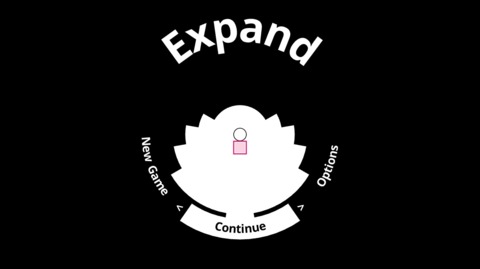
Yeesh. I figured I'd try Expand because it was free in the same Humble Bundle that offered up Regency Solitaire and it seemed like a breezy puzzle game with a neat gimmick - and it is neat! - but I wasn't prepared for how it'd make me feel. I'm still sitting here nursing a bout of motion-sickness-induced nausea and a headache, and it's rare that any game can make me feel that way. I'm speaking as someone who can play hours of head-bobbin' FPS games in single sessions without incident, but Expand wiped me out in thirty minutes.
The game looks on the surface like every other minimalist Indie action game: you're a cube, you have to float around a lot of monochrome level design while avoiding getting trapped or touching any hazardous red surfaces, both of which will bump you back to a "safe" checkpoint. However, the levels are built around a circular core where right and left are actually clockwise and counter-clockwise, and up and down are "away from the center" and "into the center" respectively. This results in a lot of controller confusion, especially when you're at the bottom of the screen and the controls appear to be reversed - going clockwise from 6 o'clock would make you go left, not right. Add to this the way that the stage elements quickly scroll into and out from the center of the circle rather than scrolling left or right and it really starts to mess around with your visual acuity before too long.
In addition, the game makes the fatal error of conflating increasing challenge with a frugality of checkpointing, with difficult sections often going on for minutes without respite and demanding a high level of concentration. That's barely acceptable for most puzzle/action games that adhere to a strict difficulty curve, but the game doesn't account for the fact that the above traversal is so off-putting that it never normalizes through practice the way most control schemes do - the game simply assumes that you'll get used to the idea of "right as clockwise" eventually and roll with it, using that logical fallacy to justify its ramping up of the difficulty level at a steady rate. This makes the game very obnoxious to play, in addition to nauseating. Sometimes you see an indie puzzle-platformer with some cool new paradigm-shifting concept and wonder why no-one had ever thought to build a game around it before, and then you get those like Expand where it's all too obvious why no-one would seriously consider it, despite the cool effects it can produce.
Music's all right, though.
Divinity: Original Sin!
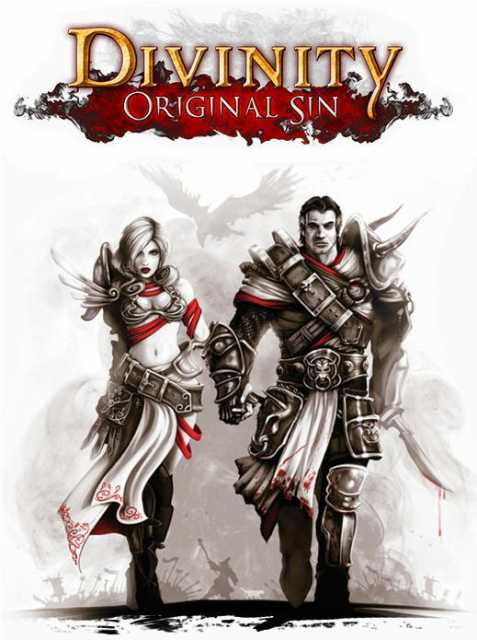
I feel like I'm making good progress with Divinity: Original Sin, and I appreciate how much it resembles the first game in the series despite the many welcome advances to its combat and character progression. The first game, Divine Divinity, had a top-down open-world that resembled a Diablo game. You'd be placed in the middle of the screen and you'd explore the contours of the huge area you're in for various treasure chests hiding in nooks and crannies, discovering new side-quests and waypoints along the way as more of the fog of war becomes uncovered. Exploring the first region of Divinity: Original Sin, Cyseal, felt a lot like that. Some areas would be gated off by well-meaning Legionnaires (a world-encompassing peacekeeping force who established a presence in Cyseal due to its undead horde problem) until the player's party had hit a certain experience level, but the rest would be free for an inquisitive band of heroes to investigate.
The game builds its encounters in such a way that, rather than attempting to scale them all to the player's present level, creates encounters of a specific level of challenge and it's down to the player to encounter them in the right "order", as it were. Some areas are far more dangerous as a result, and there are many ways those areas can deter a low-level band without just massacring them. What complicates matters is that the player is seeking the source of the undead in this opening chapter, and they might quickly find the culprit if they started poking around the higher level areas accidentally. They might even bump into the "boss" of that region if they happened upon the specific route. Fortunately, the game does corral you a little without too much railroading, offering you a selection destinations to check out first before it naturally guides you to the more challenging locations and quests. It also makes it clear that you'd be best served spending an hour or so completing tasks in the starting town before setting out and getting into battles with the large groups of undead monsters surrounding the walls. If nothing else, the resources gained in these early quests would ensure your mage has plenty of decent fire-based area-of-effect spells, and your warriors have some blunt weaponry to use on the skeletons.
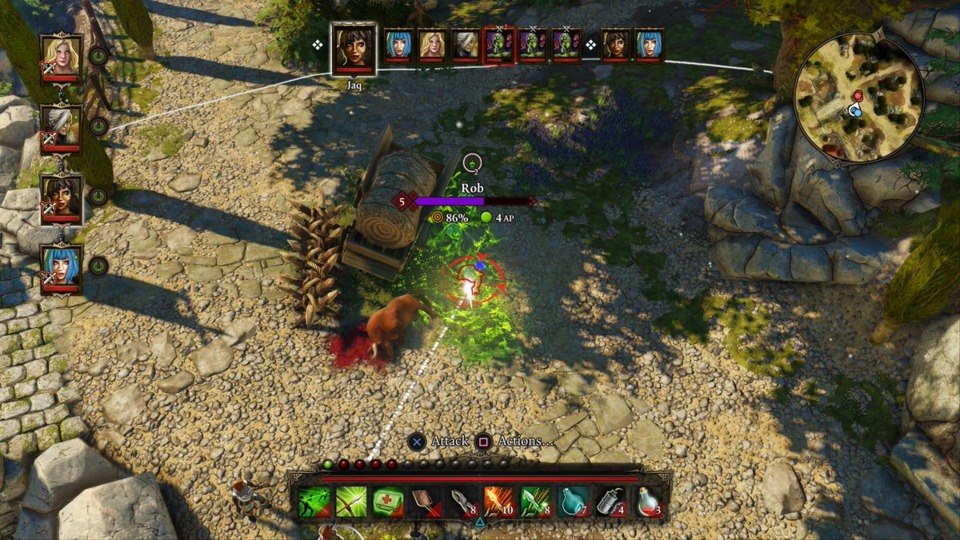
On the whole, I much prefer when games build their encounters with some deliberation, rather than hamfistedly scaling every encounter or having endless random battles to grind your way through. It means more work for the designers of course, which is why it's understandably not as common as I'd prefer, but I appreciate that every single battle in the game has some thought behind its creation. That's also made apparent when you factor in the game's great sense of environmental hazards and elemental dissonance. That's kind of a buzzword-y way of saying that every element has more to it than simply enemy resistances - the usual scenario where you'd have a fire monster that was weak to water or ice magic, say - and can create all sorts of effects depending on the state of the battlefield. Fire can cause a burning effect, which produces damage over time; earth spells tend to create pools of oil, which can be either be left to slow enemies down as they move across it, or ignited with fire to make it very painful to stand in; water magic can produce pools of water, which are harmless on their own but will cause enemies standing in them to be stunned if shocked with electricity or fall over if frozen with ice. Barrels and destructible fixtures are scattered around many battle encounters, allowing the player to make use of their oily or watery contents in lieu of spells that produce similar effects. Certain elemental pairs have complementary effects, so earth and fire is a great early combo for that burning oil pool scenario (you can also ignite clouds of poison), as is the electrified pools of water that air and water produce. There's also a huge number of status effects to fall back on, both positive and negative, and it makes the game far more tactical than other RPGs. Between the rules-heavy turn-based combat and all the above, it feels like the truest modern successor to Troika's sophisticated but flawed The Temple of Elemental Evil. I could say the same thing for last year's Pillars of Eternity too, of course.
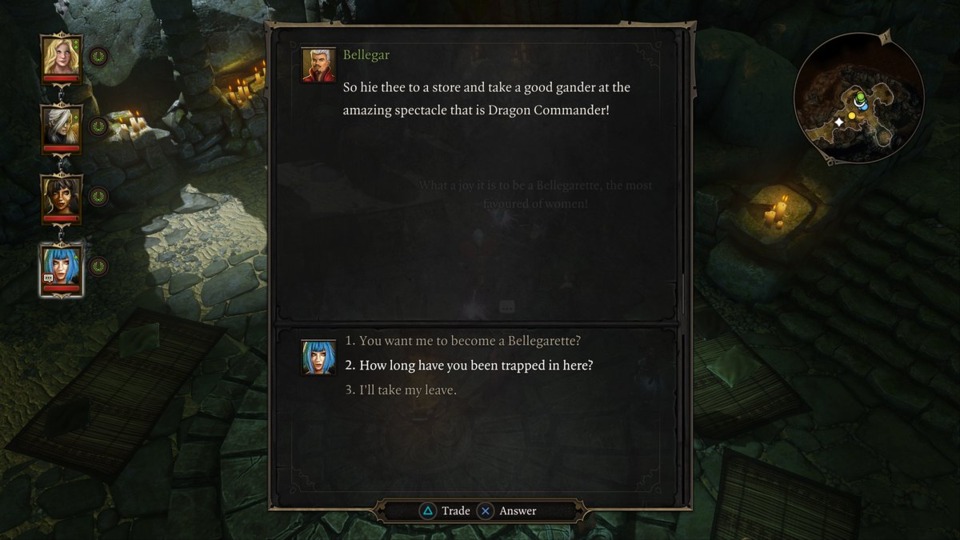
At any rate, I imagine I'll be done with Divinity: Original Sin before another week is over, and I'll put together some final thoughts on the game come next Sunday. For now though, I'd better call this edition of Sunday Summaries here. This was definitely a long one...
Log in to comment